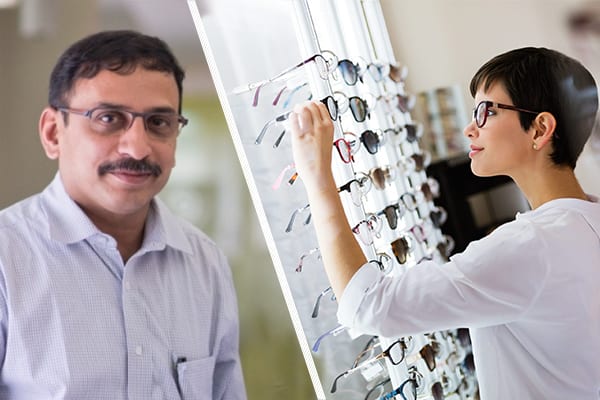The Grand Indian Optical Retail Evolution
The pandemic has taught a lot to the Indian optical community. There have been challenges but as the economy opens up, there is a revolution brewing in the trade. Ramachandran Parthasarathy shares his insights.
Indian optical industry is currently going through a transition phase in the mid to long term. One of the key lessons learnt from the pandemic has been that the working capital in optical retail is under a heavy strain as the cash flow has been affected in a big way.
Primarily the current retail model has a very high inventory sitting in the books and opticians are grossly over stocked when compared to the sale value. In fact, the conversion of inventory to cash is likely to take as long as a year in some cases, if not more. The spectacle lenses are back to back orders and therefore the retail inventory must address the market for frames and sunglasses.
The retail must look at products which can move out of the shelf at least three times a year. Every effort must be taken to carefully scrutinize the moving stocks. The days of impulsive purchases are over and for the optical industry, the overall generation of cash must be the core focus. Margins which are generally spoken about are often not realized.
The Upside
On the positive side, the awareness to care for eye health is resulting in the population going in for eyewear - spectacles and sunglasses. It is pertinent to note that spectacles have been categorized as assistive products and are distinct from medical devices, as recommended by several agencies including the World Health Organization. Dispensing opticians, therefore, contribute indirectly to nation-building by offering the right product and improving the lives as well as productivity of the population at large.
The Growth Of E-commerce
Over the last decade, e-commerce increased the awareness of the eyewear segment that was previously not the top-of-the-mind recall for consumers. In business terms, they were on a spree to pick consumers and therefore compromised on business margins and profitability. Private equity funds and venture capitalists were willing to take a bet and support a disruptive model. This paved the way for aggressive discounting to lure consumers into buying online.

Key Takeaways
The important lesson to learn here is that the traditional brick and mortar opticians did not change the way of doing business. They continued to practice what they knew and did well in maintaining relationships with customers and trust. While this is an extremely important aspect in optical retail, there is also a need to get in young consumers. However, in this case, the retailers handed over the entire segment over a platter to the online trade community. Having said that many retailers have now realized their mistake and adapted to this new consumer behaviour as well as evolving buying patterns.
The Road Ahead
Futuristic as we go, there is a need for the optical community to work together and co-exist. As the industry is quite small in size compared to many other sectors, the supply chain for retailers is quite crucial. All the suppliers and manufacturers need to be supported with cash flow flowing into the system.
Another area that needs attention is state-of-the-art optometry equipment in optical practice. This builds credibility and would be a differentiator for independents over the app-based applications that are available all across through e-commerce platforms and also offered by various manufacturers.
Optical retailing experience must be a blend of clinical ability and fashion. My view is that while a patient enters the optical store, the consumer must walk in keeping in mind his continued trust and reliability to the ECPs he visits. In addition, there must be a blend of the state-of-the-art professional eye care delivery matched by consumer experience tilted to the fashion side as well. Blending eye health and solutions with fashion would be a great recipe for success. This recipe will be extremely hard for e-commerce standalone platforms to replicate while omni channels will remain an integral part of our business evolution.






